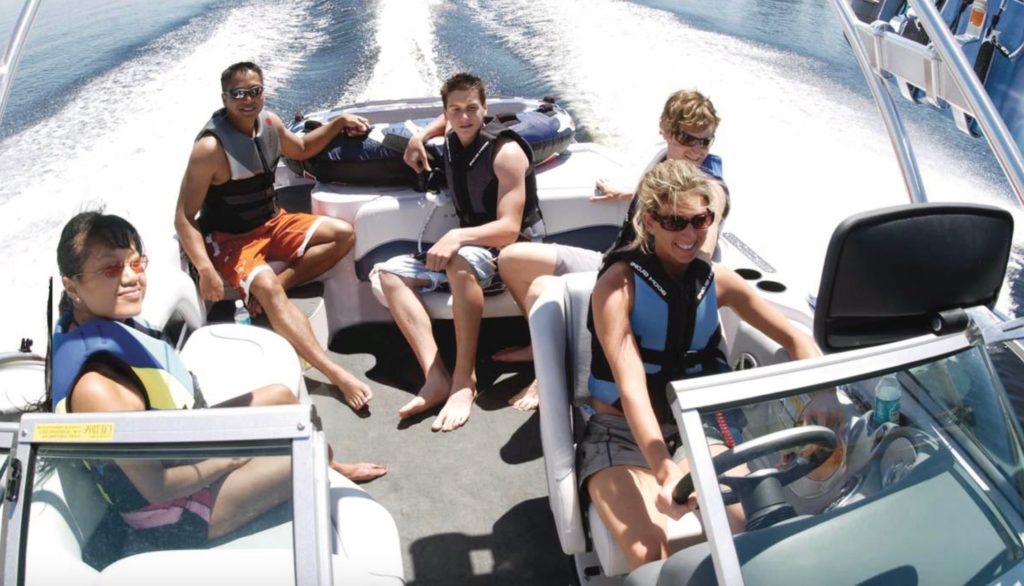
Have you seen the forecast? It looks like summer is here in B.C. and after a long winter residents are about to take full advantage. That means our waterways will be packed with watercraft on every sunny day. While boating is one of the big benefits of living in our saltwater and freshwater haven, it comes with a set of concerns that cannot be ignored. A beautiful day on the sea can turn into a nightmare without the right precautions in place.
Last month, Park Insurance launched our boating insurance tips article, with a focus on potential liabilities. Today, Park Insurance is here to float your boat with easy to follow tips that will keep you, your passengers, and watercraft safe through the season.
Six Step Preparedness Plan for Pleasure Craft Operators Heading Out to Sea in BC
1. Make Sure Your Boat Floats – Inspect & Repair
Just because your watercraft was in perfect working condition when you docked or tucked it away for safe keeping through the winter, doesn’t mean the same rings true today. In fact, if you didn’t follow boat winterizing best practices, there has likely been some damage. No matter how small, it can have a major impact on your safety on the water. Saltwater erosion, corrosion, small stress fractures in the hull (from poor storage), clogged bilge pumps, pest infestation, fuel degradation, and engine malfunctions from inactivity are all common off-season concerns. Give your boat a complete inspection and repair/replace sections where needed.
2. Make Sure You Don’t Have to Weather a Storm
Weather on the West Coast is fickle. You simply can’t make plans on Monday for a boating excursion on Saturday. You must monitor weather reports right up until the day of departure, including the local marine forecast which factors in winds and waves. You must consider each strait, sound, and waterway as a unique entity. For instance, your experience on the Strait of Georgia can be vastly different than that found on the Howe Sound on the same day. Monitor the marine forecast for the entire Pacific – South Coast of B.C. (or select other areas) here.
3. Close Is Not Close Enough – WEAR Your Lifejacket
According to the Canadian Red Cross Drowning Report, every year hundreds of Canadians drown while boating. Tragically, the vast majority of them (87%) were not wearing a lifejacket or PFD (or did not have it done up properly) when they drowned.
Don’t fool yourself, even if you are good swimmer or are staying relatively close to shore, you still need to wear your PFD (Personal Flotation Device). It is extremely dangerous to assume that you will be able to find and fasten your flotation device in the water:
- you may not be able to reach your boat and the PFD aboard after you fall in the water
- strong wind or waves may make putting on a PFD extremely difficult
- an unexpected fall into cold water can seriously affect breathing, nerves, and muscle strength severely impeding your ability to put on a PFD in the water
Learn more about lifejackets and PFDs and select the correct type and size for each member of your family.
You are required by law to have a lifejacket or PFD for each person on board a watercraft. Wear your PFD and encourage all of your passengers to do the same – it may save a life!
In addition to PFDs, you are required (and should) have manual propelling devices (oars, paddles) that are appropriate to the size of your vessel. If your boat cannot be manually propelled, then you should have a dingy that is big enough to help take you and all passengers safely to shore.
4. Learn the Ropes of Loading Your Boat
Improper loading of gear, recreational appendages, and passengers is a common culprit that leads to boating accidents. You need to know how to load your boat. Follow these instructions:
- Evenly distribute the weight of passengers, gear, and equipment
-
Secure equipment to avoid shifting
- Store the load as low as possible and keep passenger center of gravity low when moving about the vessel
- Explicitly follow your watercraft’s stated weight limitations. In other words, weigh before it’s anchors aweigh!
5. Leave the Grog on Shore
42% of annual water-related injuries and deaths in B.C. are related to alcohol. The law is simple, drinking and boating is illegal. Operators with more than 80 milligrams of alcohol per 100 millilitres of blood could face consequences that range anywhere between a $1,000 fine (first offense) to at least 120 days in jail (third offense). But worse, consumption of alcohol while boating can lead to the injury or death of you, your passengers, and/or others out on the water.
Don’t let passengers consume alcohol either. Doing so can affect their decision making ability, as well as hamper their coordination and balance. In addition, drunken occupants may interfere with your own ability to operate the vessel. Being three-sheets to the wind is unacceptable when on the sea. Leave the grog at bay and save it for the local yacht-club bar stool.
6. Batten Down the Hatches on Boating Liability Concerns
For one, make sure you have full boating insurance coverage, beyond what may or may not be included in your automobile and/or homeowner policies. To avoid further liability, be sure to have your Pleasure Craft Operators Card (PCOC), consider taking a boating safety course, brush up on the Marine Liability Act, and know everything that may void your boating insurance policy. View more on these watercraft liability concerns here.
Are you ready to set sail on an endless summer on the sea? Contact Park Insurance to speak to an insurance broker regarding all of your watercraft policy questions.